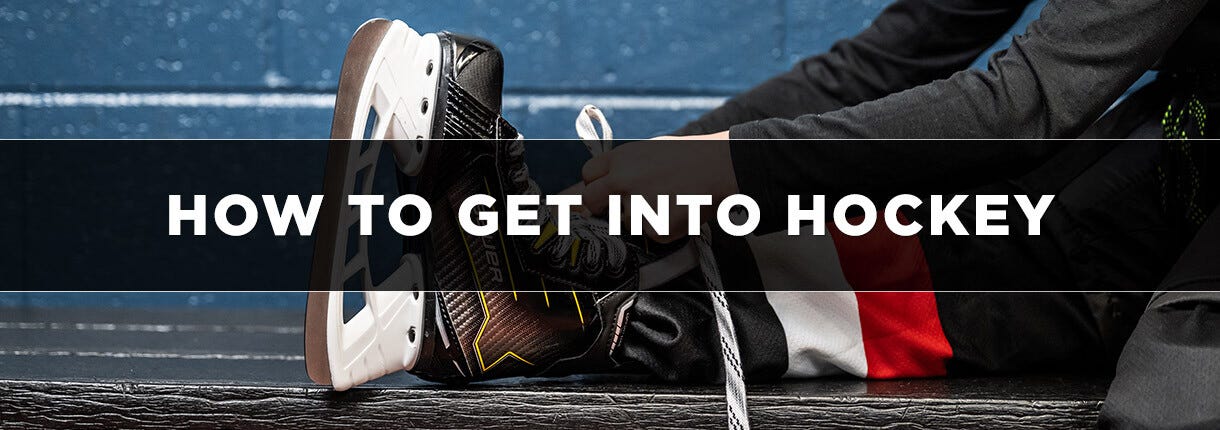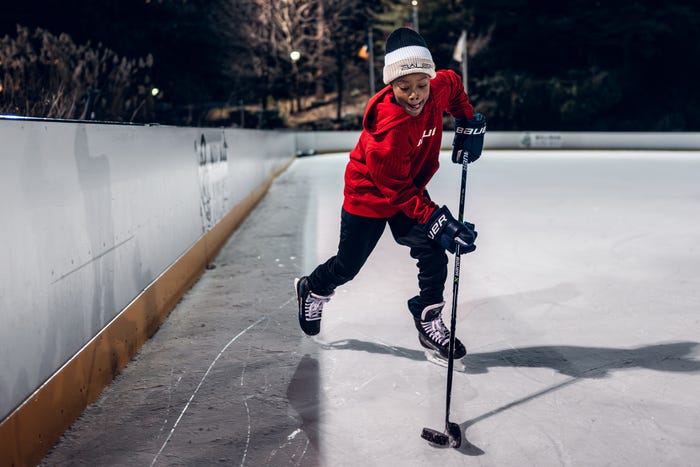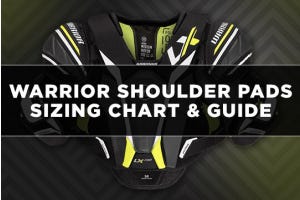How To Get Into Hockey: Starting Your Hockey Journey

In this article, we will discuss
How To Get Into Hockey: Starting Your Hockey Journey


Hockey is an exhilarating sport that combines speed, strategy, and skill. Whether you're drawn to the fast-paced nature of ice hockey or the accessibility of street hockey, getting into the game can be a rewarding experience. This guide will walk you through the essentials of starting your hockey journey, from mastering skating to finding the right equipment and joining a team.
Understanding the fundamentals of hockey is crucial for any beginner. Here are some key points to get you started:
- Objective: The main goal is to score more points than the opposing team by getting the puck into their net.
- Gameplay Structure: Hockey games are divided into periods, typically three, with breaks in between.
- Scoring: Goals are scored by hitting the puck into the opponent’s net using a hockey stick.
- Types of Hockey: There are various forms of hockey, including ice hockey, street hockey, and roller hockey.
Acquiring the Necessary Equipment
Having the right gear is essential for both safety and performance in hockey. Here's a list of the necessary equipment:
Skates: Ensure they fit well and provide good ankle support, as proper fit is crucial for balance and movement on the ice.
Stick: Choose the right length and flex based on your height and playing style. A properly selected stick helps with shooting accuracy and control.
Helmet: Must fit snugly and come with a face cage or shield for protection against pucks, sticks, and falls. Helmets with good padding also help reduce the risk of concussions.
Shoulder/Elbow Pads: Provide vital protection for your chest, shoulders, elbows, and upper arms. Make sure they fit comfortably while allowing for a full range of motion.
Shin Pads: Designed to protect your knees and shins from pucks and collisions, shin pads should fit snugly and cover from the knee to the top of your skate.
- Gloves: Provide hand protection from sticks, pucks, and falls. A well-fitting glove should allow for easy stick handling while offering protection for your fingers and wrists.
Building Hockey-Specific Skills
To excel in hockey, you'll need to develop several core skills. Here’s a step-by-step guide:
Skating: Solid skating skills are the foundation of hockey. Being comfortable on the ice is crucial before diving into gameplay. Start with skating lessons and focus on basic techniques like balance, forward skating, stopping, and turning. Regular practice is essential to build confidence, improve your agility, and enhance your overall mobility on the ice.
Puck Handling: Develop your ability to control the puck while skating. Use cones or obstacles to create drills that simulate game scenarios. Practice stickhandling in various positions and speeds, ensuring you can maintain control under pressure. Incorporating puck protection techniques will also help you shield the puck from defenders.
Passing: Work on both short and long passes with a partner, emphasizing accuracy and speed. Practice passing on the move and receiving passes to enhance your overall game awareness. Incorporating passing drills that require quick decision-making will also help you adapt to game situations more effectively.
Shooting: Learn different shooting techniques, including wrist shots, slap shots, and backhands. Focus on proper technique, body positioning, and follow-through for each shot type. Regular shooting practice will improve your accuracy and power, making you a more effective scorer on the ice.
Goaltending: If you’re interested in playing as a goalie, practice your stance, positioning, and save techniques. Work on tracking the puck, lateral movement, and rebound control to improve your overall effectiveness. Drills that simulate game situations, such as breakaways and shooting drills, will enhance your reaction time and decision-making as a goaltender.
Finding Local Leagues and Teams
Joining a local league or team is a great way to improve your skills and enjoy the game. Here’s how you can find one:
- Online Resources: Websites like USA Hockey offer directories for local leagues.
- Community Boards: Check local sports centers and rinks for team postings.
- Apps: Use apps like TeamSnap to connect with local teams and players.
Importance of Physical Conditioning
Hockey is physically demanding, requiring strength, stamina, and flexibility. Here are some conditioning tips:
- Strength Training: Focus on exercises that build leg and core strength.
- Stamina: Incorporate cardio workouts like running or cycling.
- Flexibility: Regularly stretch to improve flexibility and reduce injury risk.
- Agility and Balance: Agility training, including ladder drills, cone drills, and plyometrics, helps enhance your quick movements and reaction time on the ice. Incorporating balance exercises, such as single-leg squats or stability ball work, will also improve your skating and edge control.
Mental Preparation and Strategy
The mental aspect of hockey is just as important as the physical. Focus on:
Game Strategy: Learn basic plays, positioning, and anticipate the game’s flow to make quicker decisions.
Focus: Stay mentally sharp, especially in high-pressure situations. Practice techniques to stay calm and focused during intense moments.
Resilience: Build mental toughness to handle mistakes and setbacks. Stay positive and bounce back quickly, turning challenges into learning opportunities.
Strengthening these mental skills will help you stay composed and perform better on the ice.
Injury Prevention and Nutrition
Staying Healthy and Injury-Free
Warm Ups: Always do proper warm-ups before games and practices to increase blood flow and reduce the risk of strains. Incorporate dynamic stretches and light cardio to prepare your muscles for high-intensity movements.
Protective Gear: Wear all recommended protective gear correctly, ensuring it fits well and is in good condition. Regularly check your equipment for wear and tear to maintain optimal protection on the ice.
Nutrition: Eat a balanced diet to support your physical activity, focusing on lean proteins, complex carbs, and healthy fats. Stay hydrated throughout the day, and consider consulting a nutritionist for personalized advice tailored to your training needs.
How To Get Into Hockey - Frequently Asked Questions
What age is best to start learning how to play hockey?
Hockey can be started at any age, but starting young (around 5-7 years old) can help build foundational skills early.
Can I play hockey without knowing how to ice skate?
Learning to ice skate is essential for playing ice hockey. Start with skating lessons before moving on to hockey-specific skills.
How often should I practice hockey as a beginner?
Practice as often as possible, ideally 2-3 times a week, to build and maintain your skills.
How do I balance hockey with school/work commitments?
Create a schedule that prioritizes both your commitments and hockey practices. Communicate with coaches to find a balance.
What are common mistakes beginners make in hockey and how can I avoid them?
Common mistakes include poor skating skills and incorrect stick handling. Focus on mastering the basics and seek feedback from experienced players or coaches.
How do I keep improving once I've mastered the basics?
Continue practicing regularly, join advanced leagues, and work on refining specific skills. Watching games and learning from experienced players can also be beneficial. Hockey is an exciting and challenging sport, but with the right preparation and dedication, you can enjoy a rewarding journey on the ice.









Login and Registration Form
or
Create an account